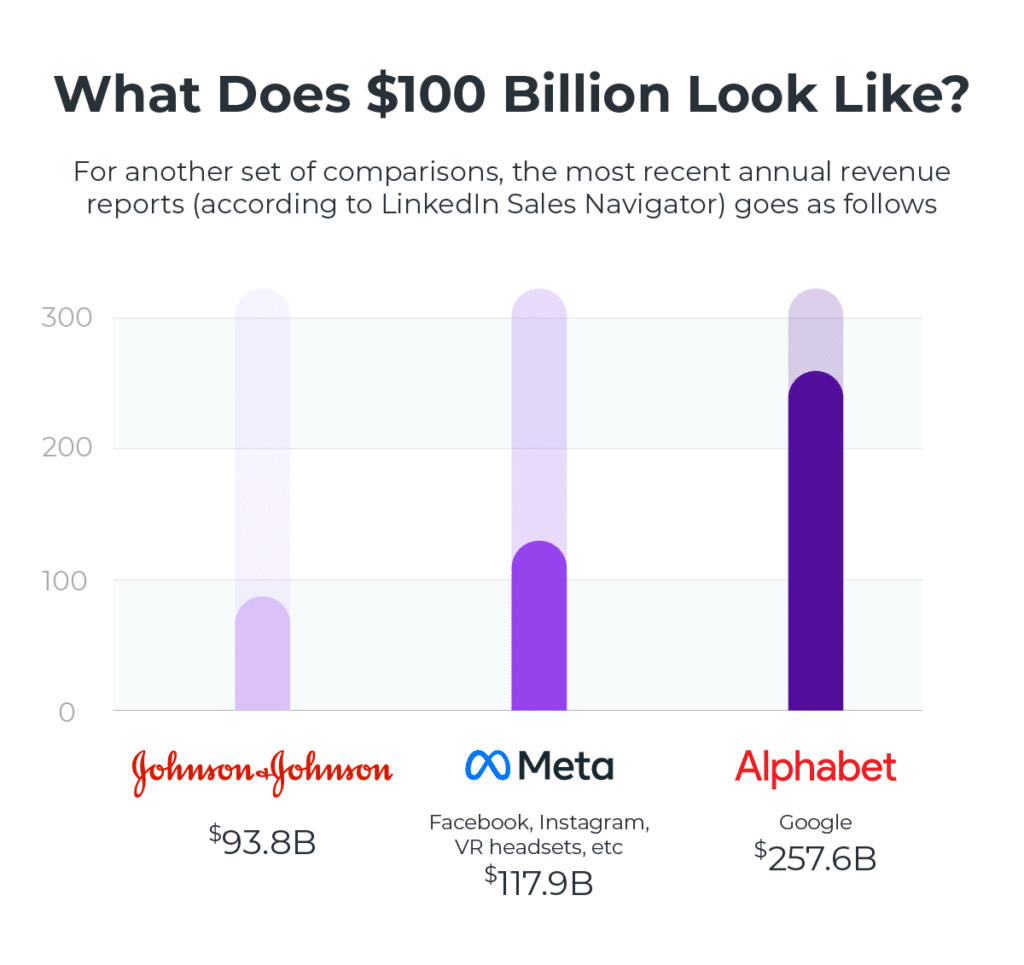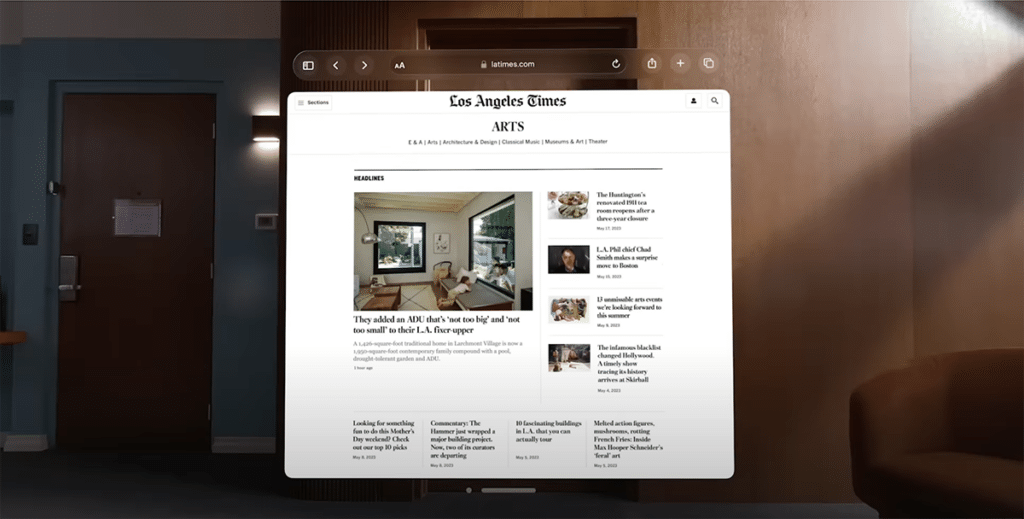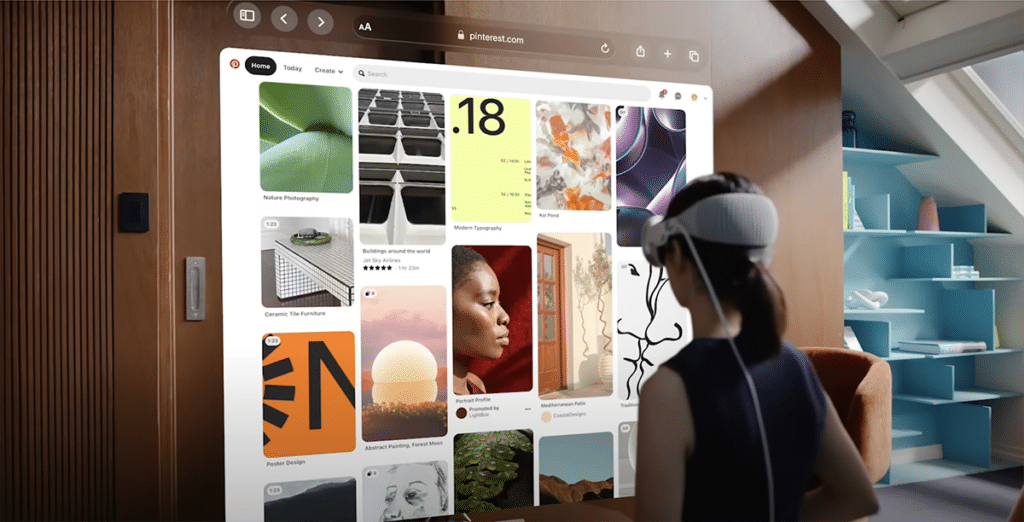Surprisingly enough, I’m not here to sing Apple’s praises or to criticize the company’s major new announcement of the Vision Pro headset.
I’d rather look at what kind of impact Apple could have on medtech products if it is successful with its new $3,500 “spatial computing” product. (Stick with me, even if your company doesn’t have a device connected to a headset. There are some interesting considerations coming for all marketers.)
According to Statista, the “global extended reality (XR) market that includes augmented reality (AR), virtual reality (VR), and mixed reality (MR) reached 29.26 billion U.S. dollars in 2022,” and the XR market is expected to continue to grow to $100 billion by 2026.
It is worth noting that these stats were published before the Apple Vision Pro announcement came out, though there were certainly rumors that Apple would be releasing a headset this year.
That’s great and all, but how much money are we really talking about? $100 billion is more than I can fathom in any real sense.
Well, when the convention industry was getting rocked by the pandemic in 2020, CNBC pointed out that $100 billion was at stake if conventions couldn’t open back up.

XR, as an industry, is projected to get to somewhere in between where J&J and Meta are today. Not too shabby!
XR Is Expected to Become More “Normal”
Headsets are still a novelty today, even though they’ve been out for a while. I’ve played around with a few, but my 15-year-old son is far more adept at using them because of how the devices have largely been positioned so far: as immersive gaming devices.
We’ve all seen plenty of humorous clips where folks wearing virtual reality headsets are so cut off from the rest of the world that they slam into walls or break furniture in their efforts to win whatever game they’re playing.
After the Apple announcement, a reporter for Wired wrote that the adoption curve is going to take a long time if the Vision product will ever succeed. As of now, people can’t get away with wearing them on a plane as of yet just because of the weird factor.
That said, a few companies—in addition to Apple—are working to change the perception of headsets as gaming devices. (We’ll talk about healthcare headsets in just a second. For now, we’re just thinking about overall market reactions.)
Lenovo just launched a new headset, and Magic Leap has a headset that’s been on the market for a while.
From a marketing perspective, look at how differently these two companies talk about their products in their videos. Lenovo goes after Meta’s positioning by saying that “for us, the metaverse is not a game,” and the video pivots to getting real business done with their system.
Magic Leap shows how manufacturers are already extending the value of their top technicians by having them coach junior techs in the field.
This isn’t just a theoretical idea for them. It’s happening now.
Headsets Are Gaining Steam in Healthcare
Healthcare often gets a lot of grief as a sector that is painfully slow to adopt new technologies. While the process hasn’t been quick, healthcare is jumping into the many benefits headsets can bring. In fact, going through all of the available examples would become a rather tedious exercise. Suffice it to say, lots of companies are trying their hand at the technology.
VR headsets are getting plenty of positive traction with regulators, as well.
Here in the U.S., VR is slowly but surely winning a number of battles in gaining FDA approval, a CPT code for hospital billing purposes, and even coverage as durable medical equipment (DME) by Medicare & Medicaid. All of this is leading to device usage that can be covered by insurance so that patients won’t have to directly foot the bill.
The FDA has a list of 39 approvals on its website for AR and VR devices, which include tools for 3D surgical techniques, tools to help with correcting vision conditions, and tools for exercise and rehab. And just recently, the NHS in the UK announced a £3 million investment in VR headsets for mental health treatment.
What about the Users?
While regulators and companies are coming to an understanding, the other critical part of this equation is the user-base. Are physicians willing to engage? Are consumers willing to see these devices as a way to help them get better?
There are several early-adopter physicians out there who are showing off some fun new tools. One of those early-adopters even wrote a book on the topic, VRx: How Virtual Therapeutics Will Revolutionize Medicine. More recently, Dr. Brennen Spiegel has been showing off some different physician reactions on Twitter to a new application he helped create for the Meta headset that will assist with “GI symptom support.”
While these reactions are not an indication that all physicians are ready for such a change, there are many who are receptive.
Questions for Going Forward
With all of this enthusiasm and with a broadening of devices available, what happens from a positioning and a technical standpoint for supporting all of these devices? Dr. Spiegel has already shown interest in the Vision Pro. How much of an investment will it take to adapt a program built for Meta’s device to Apple’s all new operating system?
What about companies like Lenovo and Magic Leap, the latter of which is working with healthcare providers?
This is a similar type of discussion as to what happens with connected medical devices that may include some sort of mobile app. Developers have to account for every type of mobile phone or connection point.
How complicated will that become in a headset era?
What Can Marketing Do?
Maybe your company has an XR device, and maybe it doesn’t. Here are a few thoughts for either type of company.
Know Thy Audience Perceptions
Marketing doesn’t have to be responsible for building out the technology. We may not be able to guide the company’s R&D pipeline, but we can keep a close eye on how people are adapting to new technology. We can observe whether our audience needs to be convinced to even wear a headset, or if we can jump straight into proving why our system is their best choice.
A Quick Aside
As I was researching companies for this article, I noticed at least one up-and-coming startup that used headsets in early promotional materials to talk about all of their surgical system’s innovations.
In more recent promo materials, that headset is gone. A small screen on the device now takes on the work of sharing critical information with the physician.
Maybe that’s to help bring costs down. Maybe it helped with the whole regulatory process to leave the headset out. In any case, this company could quickly switch back to a headset if the market seemed more receptive (pending FDA approval, etc.).
Consider the Headset Website
Let’s say your company doesn’t have any technology connected to a headset at the moment.
Even if you don’t, your team should definitely watch how “spatial computing” develops over the long term.
Think about the traditional website experience. Will your website be headset compatible? What will be needed to create a truly optimized website for headsets?


Right now, when I look at Apple’s promotional material for viewing the web through a headset, I don’t think of these sites as being truly optimized for this next generation of devices. Certainly there will be more interesting ways to experience the web as we move forward.
Think of the difference between a desktop experience and a mobile view. Behaviors are drastically different, and certain content formats work so much more effectively. Already, just looking at the options above, I’m much more likely to consider Pinterest’s website than the LA Times.
But, think about how intriguing some of NY Times’ visually compelling content could play out on a headset. Talk about an interesting product demo for your sales team!
Consider AR Ads
Lastly, we have to look at Meta’s desire to run ads through AR interfaces.
Meta has been one of the biggest reasons I personally have avoided VR headsets. I’m really not interested in giving more of my personal data to the parent company of Facebook.
That said, think about the potential of running ads during a trade show as visitors walk through the conference halls.
Or, if you offer devices directly to patients, think about being able to trigger location-based ads that could help promote healthier living.
This does create some debate about privacy and user consent, but the experience could be beneficial. People love theme-park experiences like Disney’s Magic Bands (and, more recently, the mobile app for the parks). Users give up a lot of personal information while they’re in the park, but the experience is all the richer for it. Cruise ships are experimenting with the same types of seamless engagement.
Can headsets ever get to a similar point of seamlessness and trust?
Only time will tell, but we can be ready for it if they do.
Michael spends a great deal of time with the healthcare industry both professionally and personally, which gives him the perspective of what stakeholders on either side of the care equation need.
He began coding in 2008 and subsequently shifted his attention entirely to online marketing. Michael completed his MBA in 2018, focusing on the intersection of healthcare and marketing.


